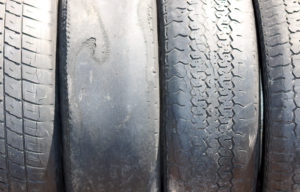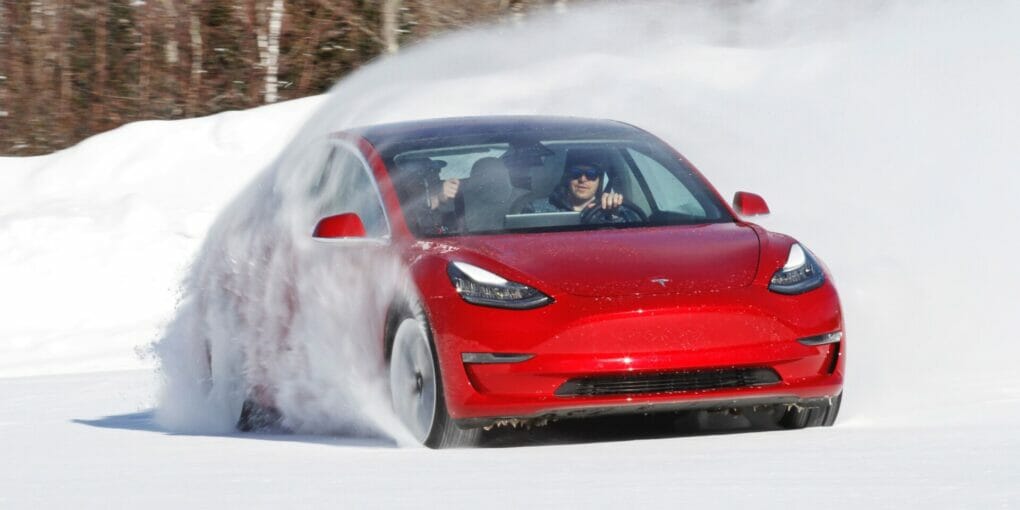How to Drive in Snow With Bad Tires
If you live in an area that experiences a lot of snow, then you know how difficult it can be to drive in those conditions. Even if you have the best tires, they can still slip and slide on the road. But what do you do if your tires are bad?
Here are some tips for driving in snow with bad tires.
- Check your tires before driving in snow
- If they are bald or have little tread, it’s time for new ones
- Slow down and take turns slowly
- With bad tires, you won’t have as much traction as you need to go fast
- Use your brakes carefully
- Sudden stops can cause you to skid and lose control of your vehicle
- Don’t follow other cars too closely
- It takes longer to stop with bad tires, so give yourself some extra space between you and the car in front of you
Worst Time to Drive in Snow
The winter season is notorious for bringing dangerous driving conditions, and snow is one of the biggest culprits. While it may be tempting to hit the road during a winter storm, it’s important to know that this is often the worst time to drive in snow.There are a few reasons why driving in snow is so dangerous.
First, visibility is often reduced during a snowstorm, making it more difficult to see other vehicles or obstacles on the road. Second, roads can be extremely slippery when covered in snow, making it easy to lose control of your vehicle. And finally, if you do get stranded during a winter storm, you could be at risk for hypothermia or frostbite if you’re not prepared.
If you absolutely must travel during a winter storm, make sure you take extra precautions to stay safe on the road. Drive slowly and carefully, and give yourself plenty of space between your vehicle and the one in front of you. And always keep an emergency kit in your car in case you do get stranded.
Is Driving in Snow Hard
Driving in the snow can be a difficult and dangerous task. It is important to take your time, be patient, and use extra caution when driving in winter weather conditions. The following tips will help you stay safe on the roadways this winter season:
– slow down and allow for plenty of stopping distance between your vehicle and the one ahead of you.
– avoid sudden starts and stops.
– use low gears when driving uphill or downhill.
– do not attempt to pass another vehicle on a snowy or icy road.
– keep your gas tank at least half full to avoid running out of fuel in case you get stranded.
– be prepared for emergencies by packing a winter survival kit in your car including items such as blankets, food, water, flares, and a first aid kit.
How to Drive in Snow With Awd
If you’re driving in snow, it’s important to know how to properly use your all-wheel drive (AWD) system. Here are some tips:1. When starting out from a stop, apply the gas slowly to avoid spinning the wheels.
2. If you do get stuck, don’t spin your wheels too rapidly, as this can damage your drivetrain. Try rocking back and forth between forward and reverse gears until you gain traction.3. Be extra cautious when braking, as it may take longer to stop on slippery roads.
Allow for more following distance than usual between you and the car ahead of you.4. Take corners slowly and gently so that you don’t lose control of your vehicle. And always stay alert for black ice, which can be difficult to see but can cause serious accidents if you hit it at high speeds.
By following these tips, you’ll be able to safely navigate snowy roads in your AWD vehicle. Drive carefully out there!
How to Drive in Snow With 2 Wheel Drive
If you’re lucky enough to live in a place that gets snow, then you know how challenging it can be to drive in winter weather conditions. Even if you have a 4-wheel drive vehicle, driving in the snow can be dangerous. But what if you only have a 2-wheel drive car?
Can you still safely drive in the snow?The answer is yes, but there are some things you need to keep in mind. First, don’t wait until the roads are covered in snow before deciding whether or not to venture out.
If possible, avoid driving altogether when conditions are bad. But if you must drive, give yourself extra time to reach your destination so that you can take things slow and easy.When driving in the snow with a 2-wheel drive car, it’s important to keep your speed down and avoid sudden stops or turns whenever possible.
Sudden movements will cause your wheels to spin and could potentially get you stuck. And of course, always make sure your tires are properly inflated and have good tread for traction.If possible, try to stay on main roads that have been plowed and salted.
Avoid side streets and untreated surfaces as much as possible. And when parking, look for spots that are well-cleared of snow so that you don’t end up getting stuck trying to get out again later on.By following these tips, you’ll be able to safely navigate your way through even the worst winter weather conditions!
How to Drive in Snow With Fwd
If you’re lucky enough to live in a place where it snows, then you know that driving in the snow can be a bit of a challenge. But don’t worry, we’ve got you covered with some tips on how to drive in snow with FWD.First things first, if you have FWD (front-wheel drive), then you’ll want to make sure that your tires are properly inflated and have good tread.
This will help ensure that your car has good traction on the road.When driving in the snow, take things slow and steady. Sudden stops or starts can cause your car to slip and slide, so it’s best to avoid them if possible.
And when turning, go slowly and give yourself plenty of time to turn into the corner.If you do start to slip or slide, don’t panic! Just take your foot off the gas pedal and let your car slow down naturally.
Then gently turn the wheel in the direction you want to go and apply light pressure on the gas pedal until you’re back under control.Following these simple tips should help make driving in the snow a breeze!

Credit: www.fixautousa.com
Can You Drive in Snow With Bad Tires?
Assuming you are referring to all-season tires vs. winter tires:Yes, you can drive in snow with all-season tires; however, they are not as effective as winter tires. All-season tires are made to provide good traction in a variety of conditions including light snow; however, they are not as specialized as winter tires.
Winter tires have a deeper tread and special compound that helps them grip the road better in icy and snowy conditions.
How Do You Drive on Icy Roads With Bad Tires?
If you live in an area that gets cold weather and icy roads, then you know how important it is to have good tires. Bad tires can make it very difficult to drive on icy roads. Here are some tips for driving on icy roads with bad tires:
1. Avoid sudden braking or acceleration. This can cause your tires to lose traction and slide on the ice.2. Go slowly and give yourself plenty of time to stop.
It takes longer to stop on icy roads, so you need to give yourself extra time.3. Use low gears when going up hills. This will help your tires get better traction on the ice.
4. Don’t use cruise control in icy conditions. You need to be able to control your speed manually when driving on ice.5. Keep your distance from other vehicles.
How Do I Make My Tires Better in the Snow?
If you live in an area with frequent snowfall, you know how important it is to have good tires on your car. But even the best tires can sometimes struggle in deep snow. If you find yourself stuck in a snowbank, there are a few things you can do to help get your car moving again.
First, make sure all four of your tires are inflated to the correct pressure. This will give them the best chance of gripping the road surface. You may also want to consider investing in winter tires, which are specifically designed for use in cold weather and snowy conditions.
If your car is still struggling to gain traction, try using a shovel to clear away any snow around the wheels. Once the area is clear, gently rock the car back and forth until it’s free from the snowbank.If all else fails, call a tow truck or ask for help from a nearby motorist.
With a little patience and some careful driving, you should be able to get through even the deepest snowdrifts.
How Do You Get Out of Snow With Bald Tires?
If you find yourself stuck in the snow with bald tires, there are a few things you can do to try and get out. First, if you have a shovel, try clearing some of the snow around your tires so that they have a better grip on the ground. You can also try packing snow around your tires for extra traction.
If neither of these methods work, your best bet is to call for help.
Demo shows the dangers behind worn tires on wet or snowy roads
Conclusion
If you’re driving in snow with bad tires, there are a few things you can do to stay safe. First, drive slowly and carefully. Second, keep your distance from other cars.
Third, be extra cautious when braking and turning. fourth, if you start to skid, don’t panic – just let off the gas and steer into the skid.


